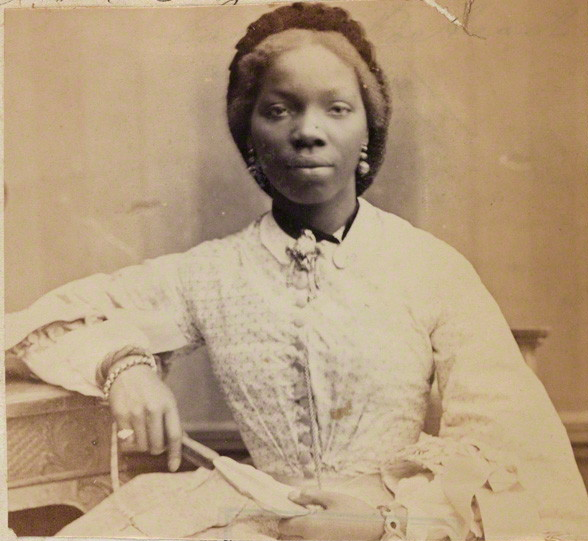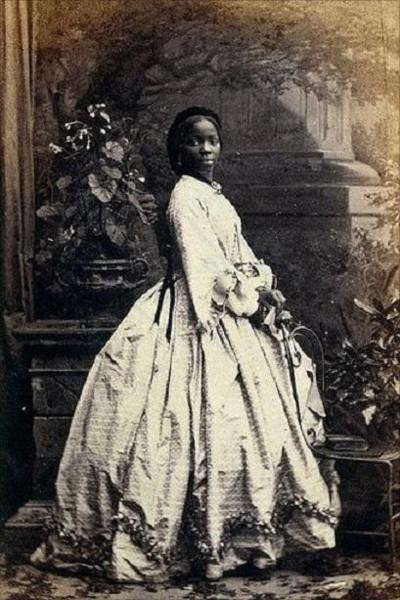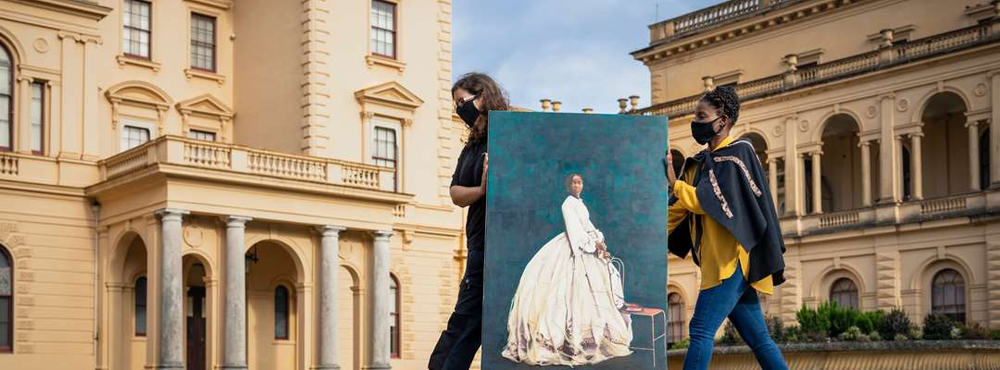Sarah Forbes Bonetta is a name often lost in the pages of history when discussing the British Royal family. Sarah was an enslaved Yoruba Princess who was presented to Queen Victoria as a ‘Gift’. Queen Victoria eventually became her godmother. A portrait of the princess now hangs in the Osborne House, Queen Victoria’s old house. The portrait is based on a picture of Sarah Forbes Bonetta on her wedding day and was painted by artist Hannah Uzor. The painting was commissioned by English Heritage which is a charity that handles hundreds of historical sites in England. The portrait is part of several portraits they plan to commission to shed light on untold Black stories in England’s history. The unveiling of the painting coincides with Black History Month in the UK.

National Portrait Gallery / Public domain
Sarah Forbes Bonetta was born as Obomo Aina in 1843. Sarah was a Yoruba princess from Oke-Odan of the Oya Empire, present-day Nigeria. Her life as a princess was soon cut short when Oke-Odan was invaded by the Dahomeyan army. The Kingdom of Dahomey was present-day Benin who often expanded their territories through conquest. When Oke-Odan was invaded, Sarah’s parents were killed and much of her village were killed or sold into slavery. Sarah became a slave in the court of King Ghezo of Dahomey at the age of 5. Dahomey was known to keep the relatives of important families as slaves or to use them in Human Sacrifices when members of nobility passed away so that they could help in the afterlife. Her life changed again two years later following the arrival of Captain Frederick E. Forbes.
Captain Frederick E.Forbes was on a British Diplomatic Mission to meet with the King about Dahomey’s involvement in the Atlantic Slave Trade. King Ghezo refused to stop Dahomey’s involvement in the Atlantic Slave Trade. It is not known if King Ghezo offered Aina as a diplomatic gift or if Captain Forbes argued for her freedom, but Aina ended up going back to England with Captain Forbes. Captain Forbes accepted her on behalf of Queen Victoria with the intention of the British Government taking care of her upbringing. Captain Forbes’ ship was named HMS Bonetta, and Aina was renamed Sarah Bonetta after the ship. Sarah met with the Queen in 1850, who was impressed by her exceptional intelligence and decided to raise her as her godmother in the British middle class. Within a year, however, Sarah developed a persistent cough which was attributed to the cold weather in Britain. As such, she was sent to school in Sierra Leone at the age of eight. Sarah returned to Britain in 1885, where she was entrusted to the care of Rev Frederick Scheon and his wife who lived at Palm Cottage. Sarah maintained a relationship with the Queen and was invited to the wedding of Queen Victoria’s daughter Princess Alice in 1862.

Camille Silvy (1835-1910) / Public domain
In that same year, Sarah got married to Captain James Davies at St Nicholas’ Church in Brighton, East Sussex. Captain Davies was a Sierra Leone-born successful businessman of Yoruba descent. Her wedding was lavish with the Bishop of Sierra Leone officiating the wedding. It was reported in the newspapers that there were 10 horse-drawn carriages and 16 bridesmaids.
After their wedding, the newlyweds moved to Nigeria and had three children. Even though she had moved, Sarah maintained her relationship with Queen Victoria who also became godmother to Sarah’s daughter.
Since childhood, Sarah was noted for her extreme intelligence and gift of music. In the Journal article titled, ‘The Church and the Emergence of The Nigerian Theatre, 1866-1914’ it is stated that Sarah was one of the leading pianists and singers in Lagos. Her husband, Captain Davies was also the first president of ‘The Academy’. The Academy “was opened on 24 October 1866 as a social and cultural center for public enlightenment, dedicated to the promotion of arts, science, and culture”.
Sarah suffered from a chronic cough her whole life and passed away from tuberculosis in 1880 on the island of Madeira off the coast of West Africa. Her story was forgotten for a long time, but, in recent years there has been more of a push to talk about her. Hannah Uzor is quoted on the English Heritage website saying. “Through my art, I’m interested in exploring those forgotten Black people in British History, people such as Sarah. What I find interesting about Sarah is that she challenges our assumptions about the status of Black women in Victorian Britain”.

The Portrait being carried in the grounds by artist Hannah Uzor. Photo: English Heritage
English Heritage plans on displaying more stories about forgotten Black figures in British history in spring 2021. The portraits will go up in sites that have links to the figures’ lives. Such figures include Rome’s African -born emperor Septimius Severus and James Chappell, a servant at Kirby Hall who saved the life of Hall’s owner.
Powered by WPeMatico


